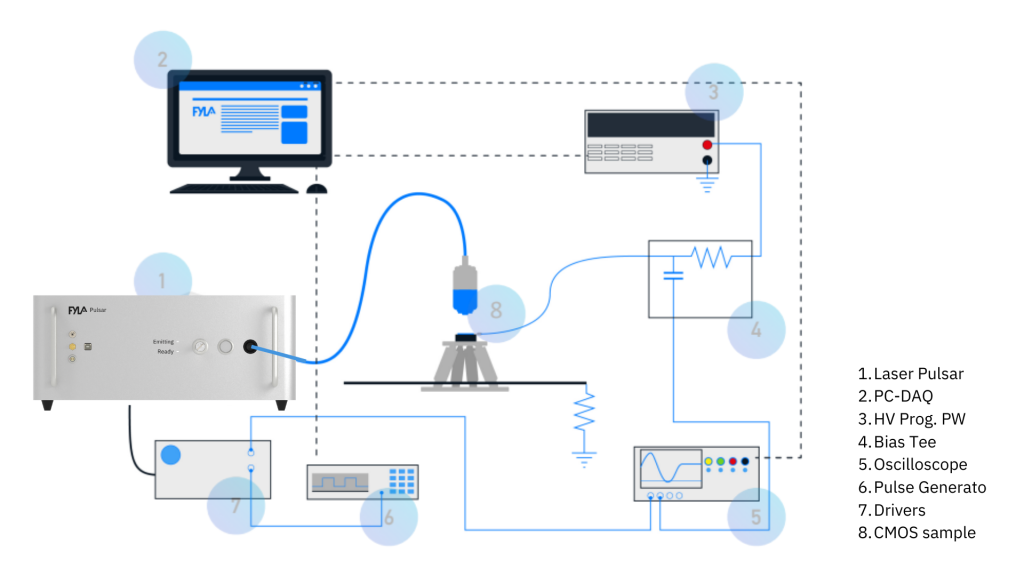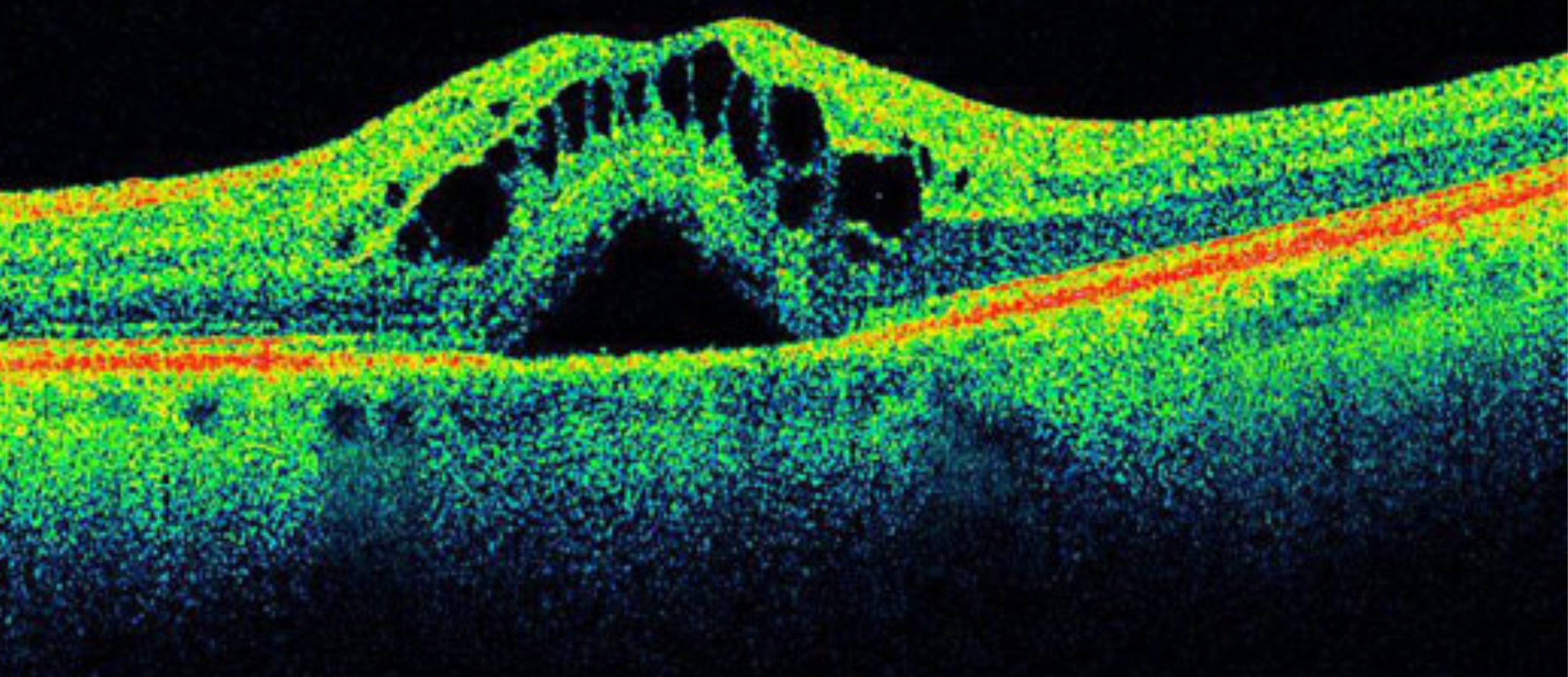What is Transient Current Technique about?
Transient Current Technique is used to characterize the electric field profile and the charge trapping inside silicon radiation detectors, where particles or photons create electron-hole pairs in the bulk of a semiconductor device, such as PiN diodes.
This technique was invented in 1996 but, it was not until 2010 when RD50 presented edge-TCT. Then, in 2013 TCT was commercialized and the TPA-TCT system has been developed over the last 7 years. Currently, They already have an all fiber-based table-top TPA-TCT laser/system.
The evolution of this technique starts with the use of a red laser for TCT. Red laser provided short penetration length, and carriers deposited in a few micrometers from the surface. It studied electron and hole drift separately and offers a 2D spatial resolution.
In the second stage, they used an infrared laser for TCT. The infrared laser offered a deeper penetration (1064 nm) and some more advantages but kept its 2D spatial resolution.
The new stage, is the use of a far-infrared laser for TPA-TCT, with two photons producing one electron-hole pair, and the energy is deposited at the laser focal point, so They got 3D spatial resolution.
Advantages of TPA-TCT with a femtosecond laser
The Two-Photon Absorption – Transient Current Technique, TPA-TCT is a powerful tool for spatially resolved inspection of semiconductor detectors. The nonlinear absorption of light is excited by femtosecond lasers that deliver photons of energy lower than the band-gap energy of the semiconductor material.
Simultaneous absorption of two-photons (the sum of their energies being higher than the band-gap energy of the semiconductor) occurring only at the focal point of the laser, allows localized generation of transient current. For silicon, emission wavelengths longer than 1150 nm are required to fully avoid Single Photon Absorption, SPA.
Until now, mode-locked Ti:Sa solid-state laser has been the standard optical source of femtosecond pulses, but it operates with emission wavelengths in the 700 – 900 nm range, limiting many aspects of the TPA-TCT. To overcome it, complex, expensive, and inefficient nonlinear frequency conversion techniques are used to extend Ti:Sa emission wavelengths to the near-infrared region. Erbium-doped fiber laser and its natural emission wavelength of the erbium-doped fiber at 1550 nm region, is an excellent candidate for an exciting source of the TPA-TCT.
PULSAR, FYLA fiber laser, unblocking 3D CMOS metrology and inspection
FYLA has developed a femtosecond fiber laser system, of properties and functionalities particularly designed for the TPA-TCT and more extensively, for generating non-linear effects applied to Semiconductor metrology and inspection, opening a broad, un-explored set of tools for the CMOS industry and the whole value chain.
Based on an all-fiber Chirped Pulsed Amplification (CPA) architecture and seeded by a solitonic passively mode-locked erbium-doped fiber oscillator, the system provides at its output femtosecond pulses at 1550 nm wavelength with configurable properties. Pulse energy from <10 pJ to > 10 nJ, pulse repetition rate from single shot to 8 MHz and pulse duration from 200 fs to 500 fs. The standard deviation of the average output power in environmental conditions is below 1% (24 hours operation).
Besides, the system offers the functionalities of emission-to-detection synchronization and of pulse properties characterization. Further work is envisaged to decrease the minimum pulse duration below 100 fs with new and evolved features to widen the application fields within the semiconductor applications segment.
CERN and FYLA sensor characterization system
 The sensor characterization system is already working at CERN. It has created new TPA-TCT system initiatives in different groups in Europe, USA and China.
The sensor characterization system is already working at CERN. It has created new TPA-TCT system initiatives in different groups in Europe, USA and China.
Currently, FYLA is working on the improvement of the laser by integrating the laser pulse source, laser pulse management module, and D-Scan in a single box fully all fiber.
This all-fiber femtosecond laser system will achieve fewer losses, higher efficiency, better (and easier) alignment, and better dispersion matching.
Know more about CERN and FYLA achievements:
- High resolution 3D characterization of silicon detectors using a Two Photon Absorption Transient Current Technique from M. F. García, R. J. Echeverría, M. Moll, R. M. Santos, R. P. Pinto, I. Vila, and M. Wiehe.
- Development of a Two-Photon Absorption – TCT system and Study of Radiation Damage in Silicon Detectors from Moritz Wiehe.
- Development of a Tabletop Setup for the Transient Current Technique Using Two-Photon Absorption in Silicon Particle Detectors from Moritz Wiehe, Marcos Fernández García, Michael Moll , Raúl Montero, F. R. Palomo, Ivan Vila, Héctor Muñoz-Marco, Viorel Otgon, and Pere Pérez-Millán.





